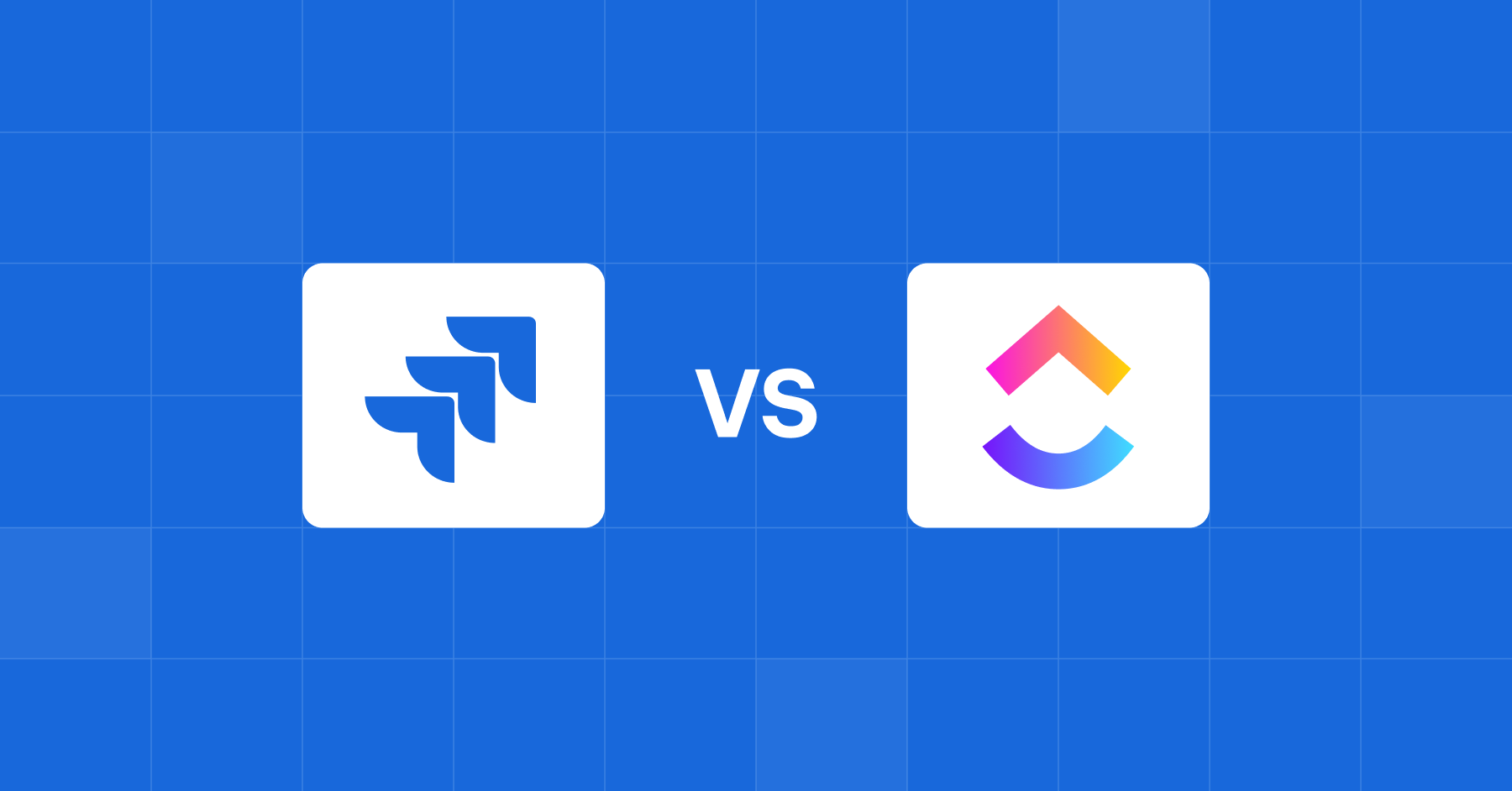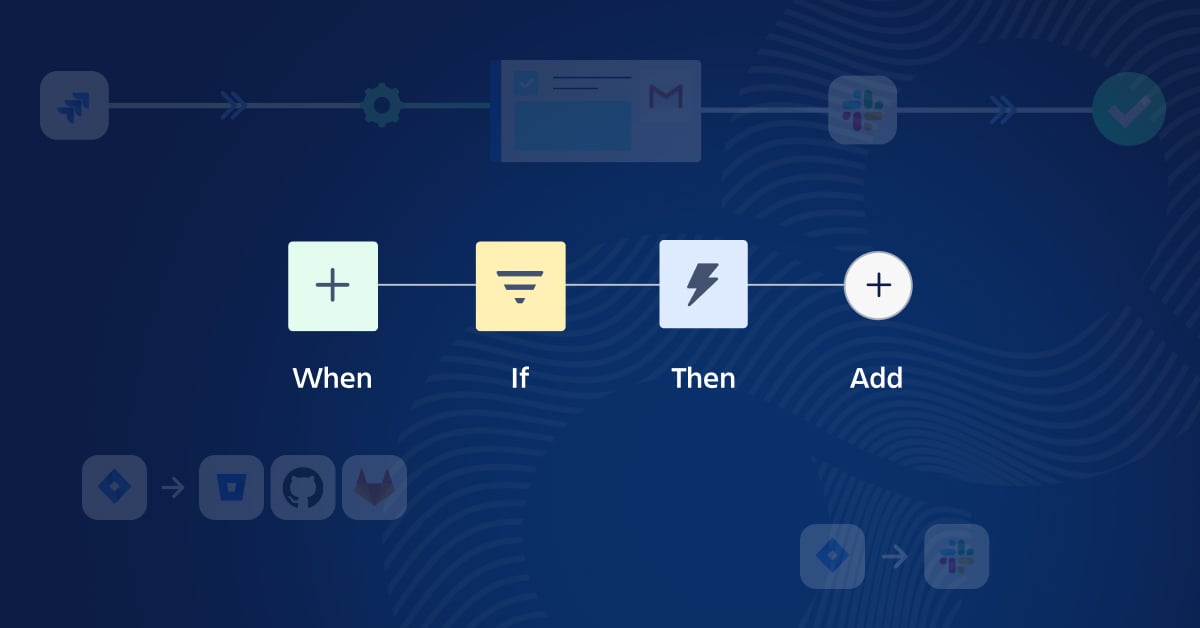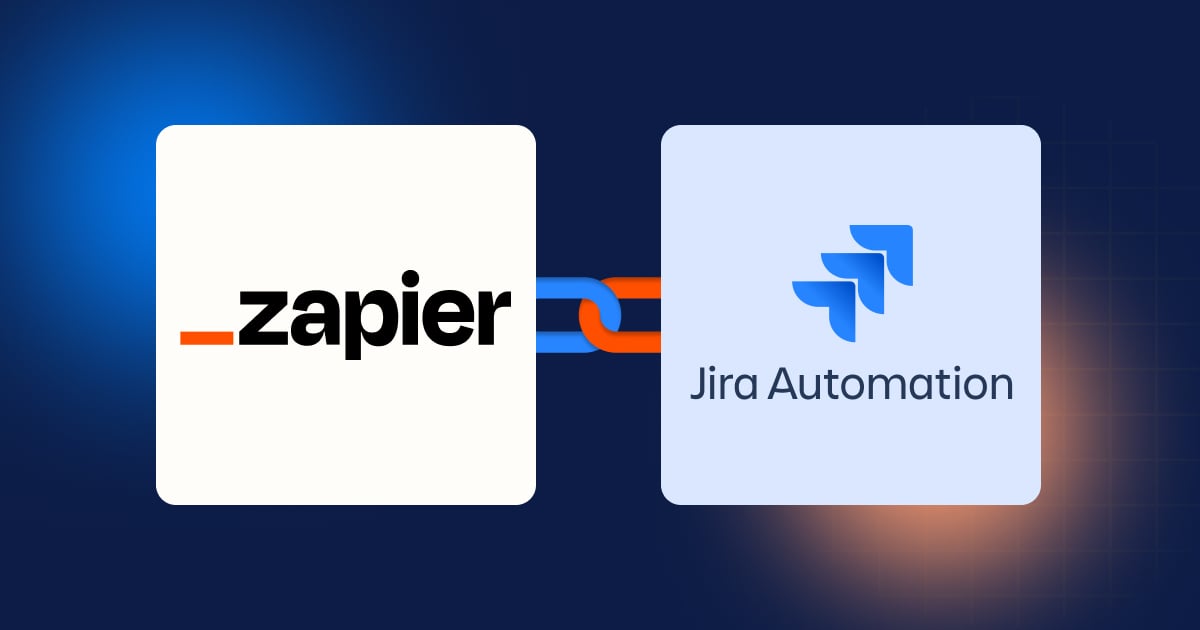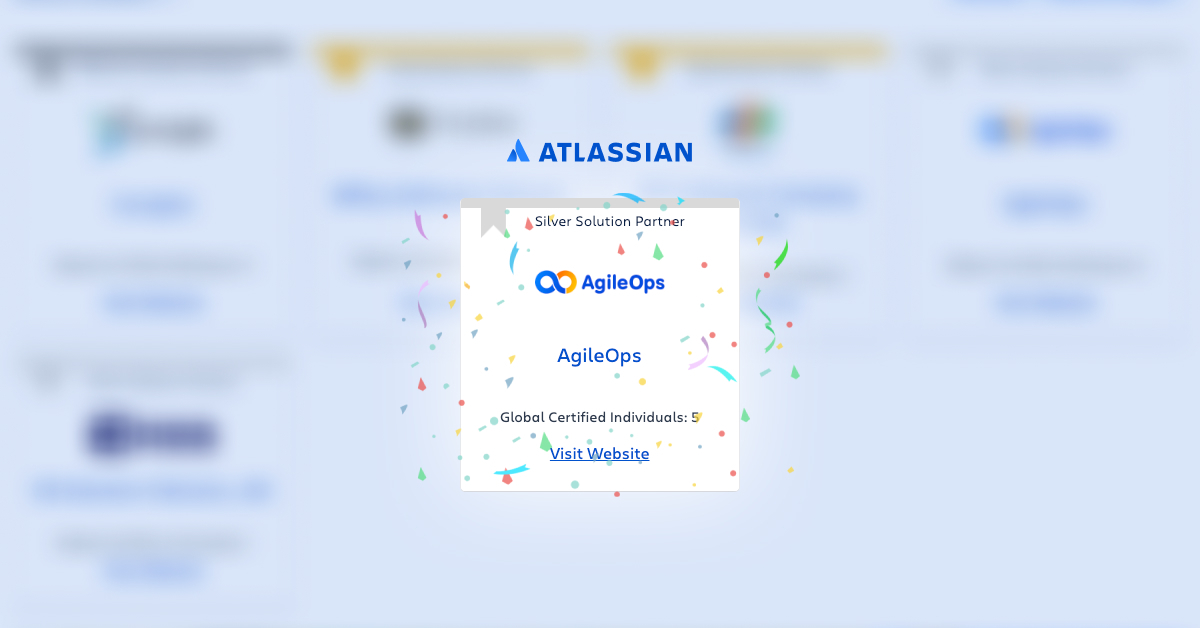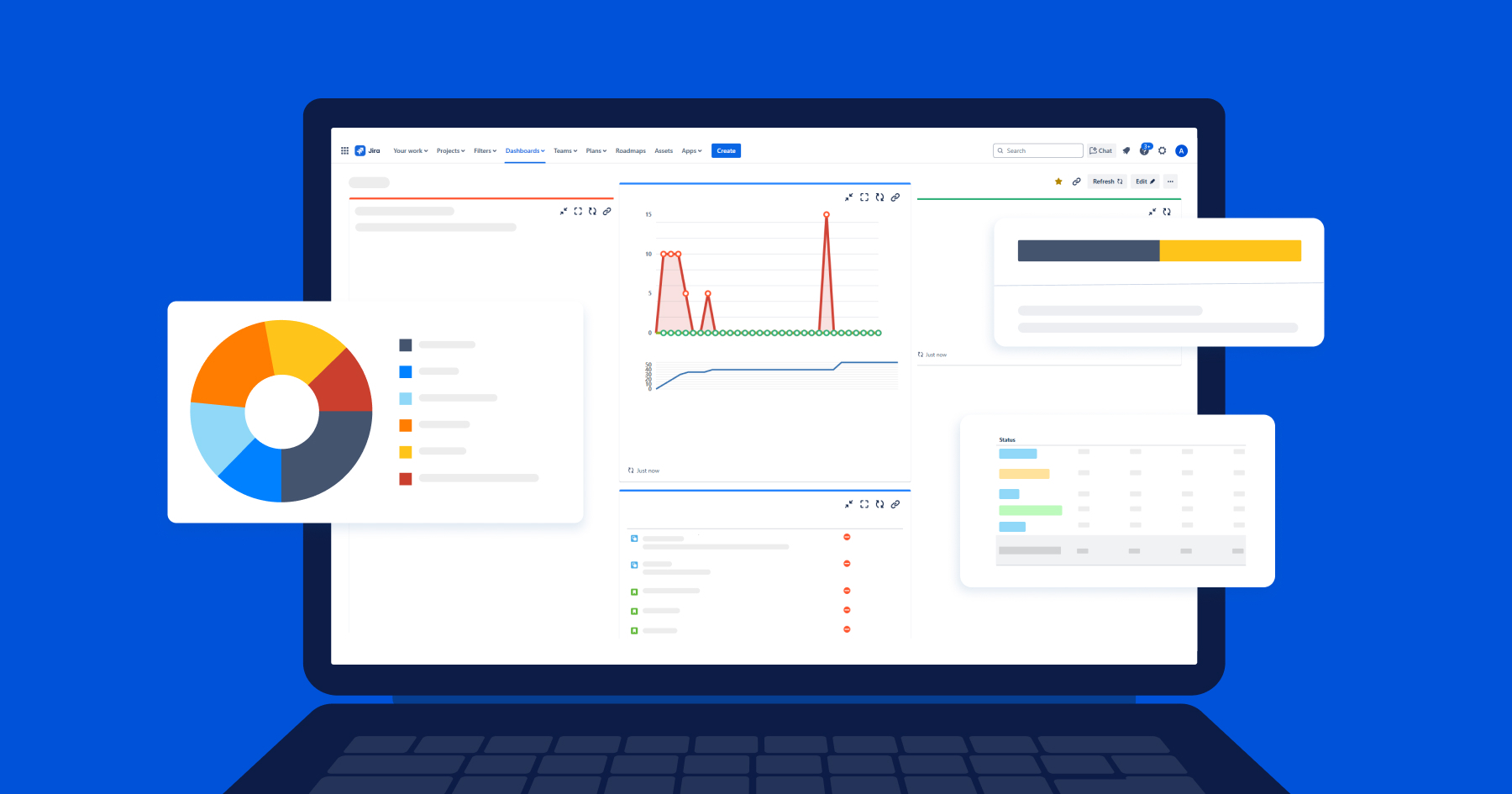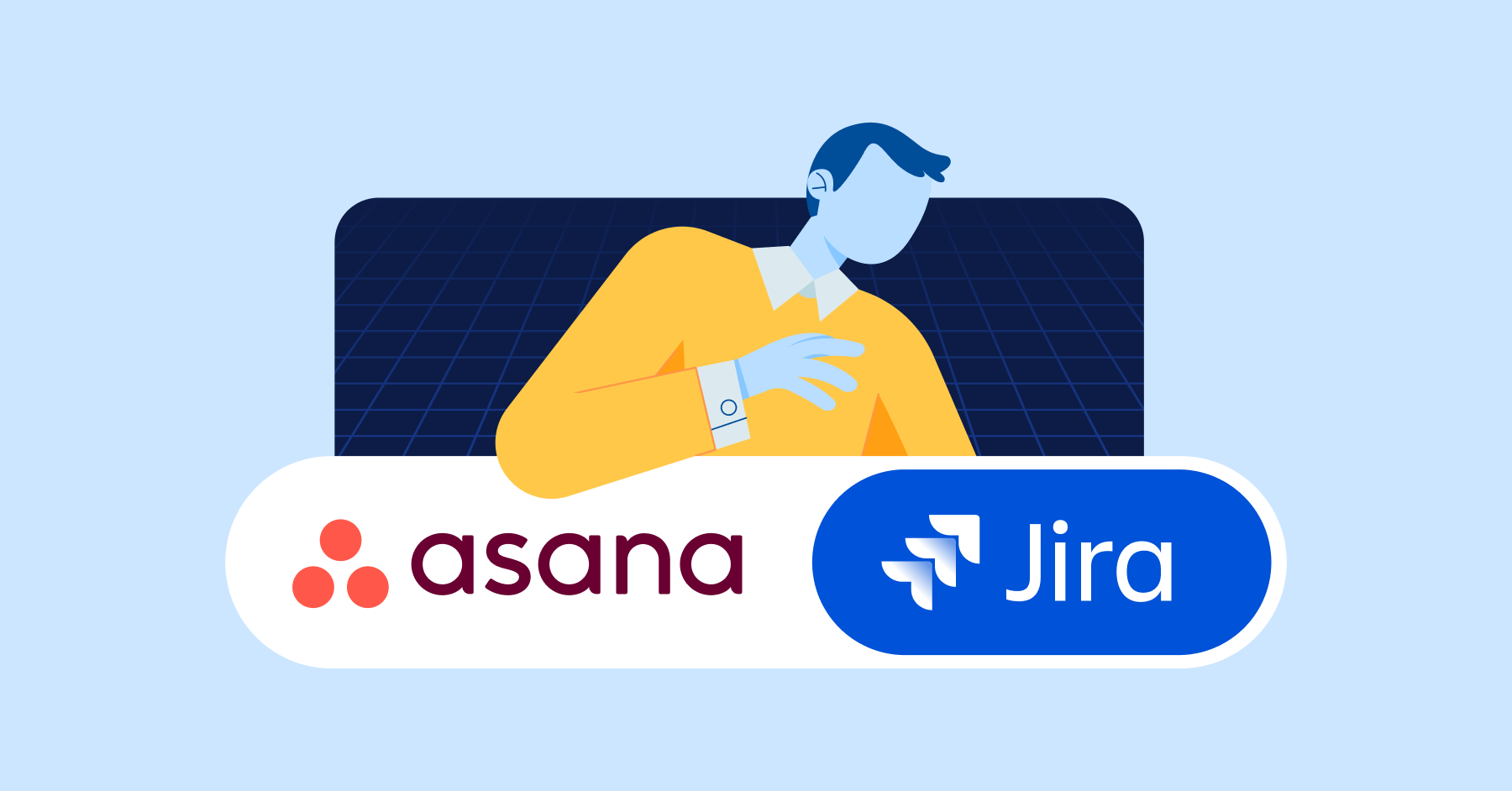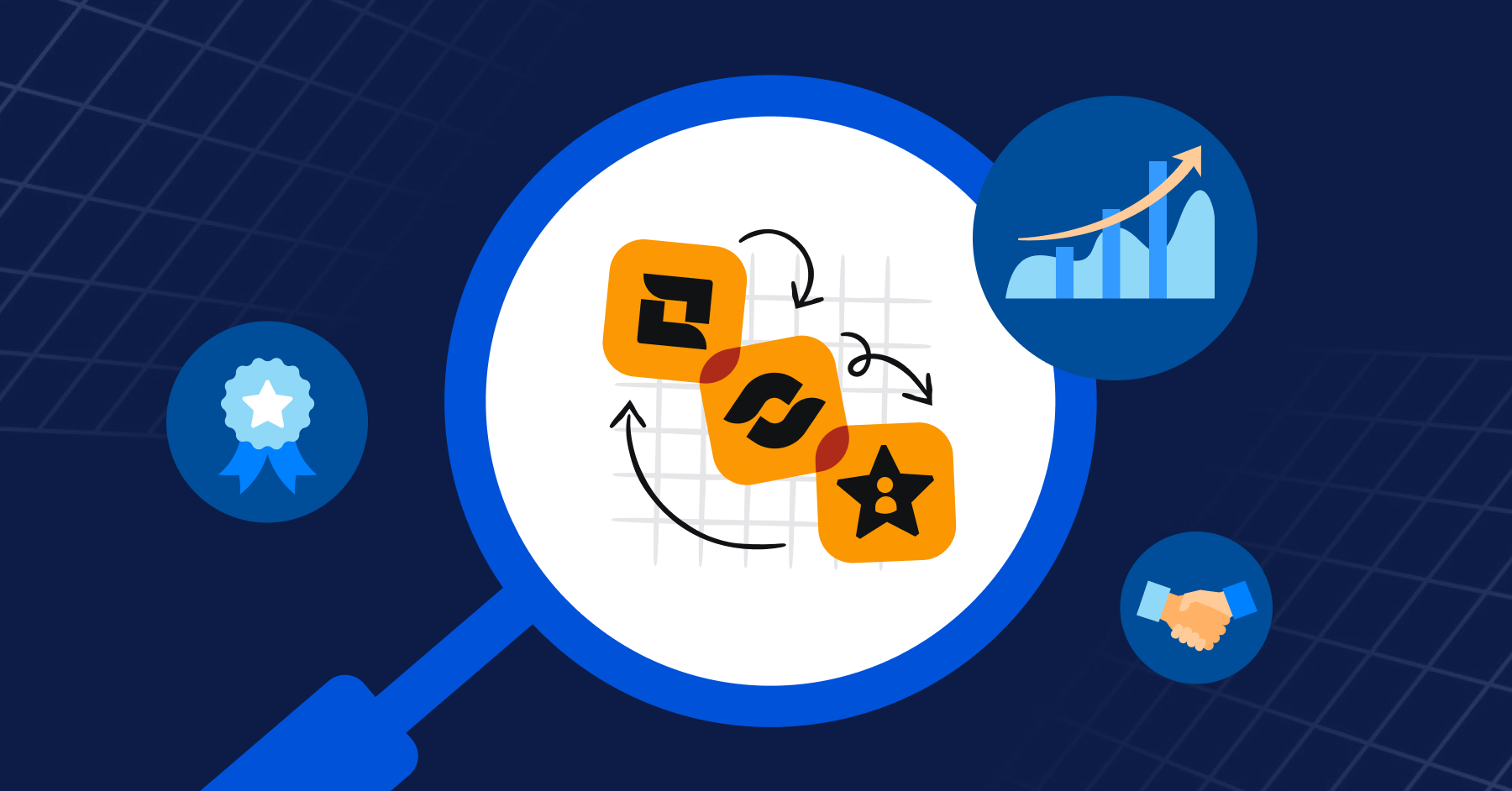-
What happens when your team outgrows sticky notes and spreadsheets?
-
You look for a project management tool that actually works.
That’s when two big names pop up: Jira and ClickUp.
Your engineering team may want tighter control over sprints and releases. Or your marketing squad is tired of scattered docs and disjointed workflows. Either way, both Jira and ClickUp offer powerful ways to organize tasks, customize workflows, and bring clarity to chaos.
But they don’t serve the same kind of team. And choosing the wrong one could cost you more than just time. In this guide, we go deep: feature-by-feature, plan-by-plan. Whether you’re a startup, a remote team, or scaling fast, we’ll help you figure out which tool fits your needs.
Jira vs ClickUp: Feature comparison
| Feature comparison | Jira | ClickUp |
|---|---|---|
| Shared platform with features tailored for different teams | ✅ | ❌ |
| Comprehensive agile reporting | ✅ | ❌ |
| Summary view | ✅ | ❌ |
| Cross-functional plans with program boards | ✅ | ❌ |
| Integrated software release dates | ✅ | ❌ |
| Unlimited levels of hierarchy | ✅ | ❌ |
| Smart filtering and search | ✅ | ❌ |
| Smart Links | ✅ | ❌ |
| Atlassian Analytics integration | ✅ | ❌ |
| Flexible permissions | ✅ | ✅ |
| Delegated administration | ✅ | ✅ |
| Board, List, Timeline, Calendar, and Backlog views | ✅ | ✅ |
| Custom work types | ✅ | ✅ |
| Custom workflows | ✅ | ✅ |
| Custom automation rules | ✅ | ✅ |
| Custom dashboards | ✅ | ✅ |
| Templates | ✅ | ✅ |
| Forms | ✅ | ✅ |
| Goals | ✅ | ✅ |
| Video communication | ✅ | ✅ |
| Document collaboration | ✅ | ✅ |
| Agile practices playbook | ✅ | ✅ |
| Mobile app | ✅ | ✅ |
| AI | ✅ | ✅ |
| Marketplace with apps and integrations | 3,000+ apps and integrations | 1,000+ apps and integrations |
Task & project management
Jira is designed for teams that need structure, consistency, and control. It excels in environments where projects follow Agile frameworks like Scrum or Kanban. With support for epics, user stories, sprints, custom Jira issue types, and Jira dashboards, this tool helps engineering and product teams stay aligned and on track. As one experienced user puts it:
I've used Jira for over 7 years and love using it because it just makes sense with how our project workflows are. It's so easy to track (especially with Kanban boards) and search old projects. It depends how you name them of course but with a good work process you can easily speed up your workflow on it." - Nic, Sr. UX Designer at a small business (G2 review).
One standout feature in Jira is its unlimited levels of hierarchy, which allows you to scale your project organization across teams, departments, and portfolios, something ClickUp does not currently offer.
ClickUp, on the other hand, is all about adaptability. It allows you to create your own workflows from scratch, choose from multiple task views like lists, boards, calendars, or timelines, and organize your workspace the way your team works best. It doesn’t lock you into a specific methodology, making it a strong choice for teams with dynamic or evolving processes.
Collaboration & documentation
Jira separates task tracking from documentation by design. Most teams use it alongside Confluence, Atlassian’s dedicated documentation platform, to create and share knowledge, meeting notes, and technical specs. The seamless integration between Jira and Confluence allows users to embed Confluence pages directly into Jira issues and view important information without leaving the platform.

Users can read Confluence documents directly in Jira
Jira also supports Smart Links, letting you preview and interact with third-party content like Google Docs or Figma directly within Jira. This keeps collaboration smooth while maintaining strong control and scalability.
ClickUp, by contrast, centralizes everything in one place. You can create rich-text docs, comment directly on tasks, chat with teammates, and link content, all without switching apps. This unified experience is beneficial for teams working remotely or asynchronously. As one user shared:
I have developed better communication with my team within my company, collaboration is now more effective between team members, which increases productivity and we are more efficient with the projects we develop. We have considerably reduced the delays that were generated when managing projects manually with traditional communication channels and Excel spreadsheets, now everything is more practical and automated.” - Marina, Marketing Director, Real Estate industry (Capterra review).
Automation & workflows
Jira offers powerful, rule-based automation through its built-in feature called Jira automation rules. These rules integrate deeply with development workflows and can be used to automate repetitive actions such as closing issues when a pull request is merged, assigning tasks based on issue type, or triggering email notifications. This makes Jira ideal for technical teams looking to streamline and standardize complex development processes.
Easily create jira automation rules to streamline your workflow
ClickUp, on the other hand, provides a visual and user-friendly automation builder that works well across various business functions. You can automate task status changes, notifications, or recurring task creation without needing technical skills. It’s perfect for non-technical teams looking to automate everyday project management workflows.
Reporting & analytics
Jira offers a wide range of Agile-specific reports such as burndown charts, velocity charts, cumulative flow diagrams, and sprint reports. Teams can build highly customizable dashboards by adding gadgets that track KPIs like issue progress, workload distribution, or release readiness. Jira's reporting tools are tightly integrated with its project tracking features. Additionally, teams using other Atlassian tools can benefit from Atlassian Analytics integration, which enables powerful cross-product dashboards and insights that blend Jira data with Confluence, Opsgenie, and more.
ClickUp also provides reporting tools, but its focus is more on visual summaries and task-based tracking. You can create dashboards using widgets for task status, workload, time tracking, and goal progress. While this works well for general project management, it lacks the depth and specificity of Agile metrics found in Jira. That said, ClickUp’s ease of use makes it appealing for teams that want quick insights without complex setup.
Integrations & developer tools
Jira stands out when it comes to integrations built for development teams. It connects natively with tools like Bitbucket, GitHub, GitLab, Jenkins, and Bamboo, making it easy to track commits, pull requests, builds, and deployments directly from your Jira issues. These integrations support an end-to-end DevOps pipeline, allowing developers to stay in flow without switching platforms. Additionally, the Atlassian Marketplace offers over 3000 add-ons extending Jira’s functionality across security, test management, CI/CD, and more.
Jira also provides advanced filtering capabilities through smart filtering and search, powered by JQL (Jira Query Language). This allows users to quickly locate tasks, identify blockers, and segment work with pinpoint accuracy.
ClickUp, meanwhile, offers a broad range of integrations aimed at general productivity, including Slack, Google Workspace, Zoom, HubSpot, and more. While it does offer GitHub and GitLab integrations, these are not as deeply embedded as Jira’s. As a result, ClickUp is better suited for non-technical or mixed teams that need wide-ranging, easy-to-use integrations across departments, but not necessarily deep developer toolchain connectivity.

ClickUp integrations
Security, compliance & admin control
Jira and ClickUp both offer enterprise-grade security features including Single Sign-On (SSO), two-factor authentication (2FA), role-based access controls, and data encryption. However, Jira stands out when it comes to advanced enterprise needs.
Jira offers more granular permission schemes, allowing administrators to control access at the project, issue, or even field level. It also includes detailed audit logs and change tracking, which are essential for organizations in regulated industries or those managing sensitive data. Its compliance certifications include ISO/IEC 27001, SOC 2, GDPR, and more, making it a trusted choice for large enterprises.
ClickUp also provides robust security but leans more toward simplicity. It covers the essentials, like permissions, SSO, and encryption, while offering admin tools to manage team access and visibility. However, it lacks the same level of depth and configurability found in Jira, which may be a deciding factor for security-conscious organizations with complex compliance requirements.
Pricing plans
Choosing the right plan isn’t just about cost, it’s about unlocking the capabilities your team actually needs. The table below gives you a quick side-by-side look at Jira and ClickUp’s pricing tiers.
| Plan tier | Jira | Plan tier | ClickUp |
|---|---|---|---|
| Free | Free forever for 10 users | Free | Personal use |
| Standard | $8 per user / month
Free for 14 days! |
Unlimited | $10 per user / month |
| Premium | $14 per user / month
*Free for 30 days! |
Business | $19 per user / month |
| Enterprise | Custom pricing | Enterprise | Custom pricing |
Find your fit: Jira vs ClickUp for different team types
Choosing between Jira and ClickUp depends heavily on your team’s structure, goals, and workflows. But if you're looking for scalability, enterprise readiness, and proven agility, Jira deserves a closer look. Here’s how the two tools compare in real-world contexts:
Marketing or non-technical teams
If your team thrives on flexibility, quick pivots, and easy-to-use tools, ClickUp is a strong match. Its intuitive UI, built-in docs, and visual dashboards make it perfect for fast-paced marketing campaigns, creative teams, and cross-functional teams without heavy technical workflows.
Engineering/product team using Scrum/Kanban
Jira is purpose-built for Agile. With robust features like epics, sprints, story points, and a complete set of Agile reports, it empowers engineering and product teams to manage complex workflows at scale. Teams can implement Scrum, Kanban, or hybrid approaches with ease and full traceability.
DevOps or CI/CD pipeline tracking
Jira shines for DevOps use cases. With native integrations to GitHub, Bitbucket, Jenkins, and CI/CD pipelines, it connects your entire development lifecycle. Plus, its automation rules and integration with tools like Opsgenie and Statuspage make it ideal for teams managing incidents, releases, and deployments.
Scaling product teams and enterprises
Jira’s strength lies in its enterprise-grade reliability, granular permissions, audit logs, and Atlassian ecosystem. It grows with your business, from startup to scaleup to multinational, without losing transparency or control. Whether you’re building internal systems or customer-facing products, Jira provides the structure needed to scale delivery efficiently.
FAQs to help you choose the right tool
-
Is Jira better than ClickUp for software teams?
Yes. Jira is built for Agile development with native features like sprints, epics, and integrations with tools like GitHub and Bitbucket. It gives software teams the structure and traceability they need. -
Can ClickUp handle complex projects?
Yes, especially for teams that value flexibility. But for strict Agile or compliance-heavy environments, Jira offers more control. -
Which tool is easier to learn?
ClickUp is more intuitive for new users. Jira has a steeper learning curve, but it pays off for teams needing advanced workflows. -
Do I need both tools?
Not usually. Jira and ClickUp can overlap in use. Most teams pick one, though large companies may split usage across departments. -
Which tool supports better collaboration?
ClickUp shines for real-time collaboration with built-in docs and chat. Jira is better for technical collaboration, especially when paired with Confluence. -
Can I migrate from ClickUp to Jira or vice versa?
Yes, but migrations may require rebuilding workflows and adjusting settings. Plan carefully. -
Are the free plans good enough?
They’re great for small teams. Jira offers a generous free plan for up to 10 users. But as you grow, you’ll likely need premium plans to unlock advanced features and controls.
Still undecided? Here’s our recommendation
Jira and ClickUp both offer powerful project management capabilities, but they serve different masters. If your team runs sprints, writes code, and integrates with CI/CD tools, Jira is your best bet. If you’re a marketing team or cross-functional crew that thrives on flexibility and visual collaboration, ClickUp will feel more natural.
Looking to implement the right tool for your team? Talk to AgileOps - Atlassian Gold Solution Partner, we’ll help you set it up for success.
.png?width=480&height=336&name=Illus%20(4).png)




